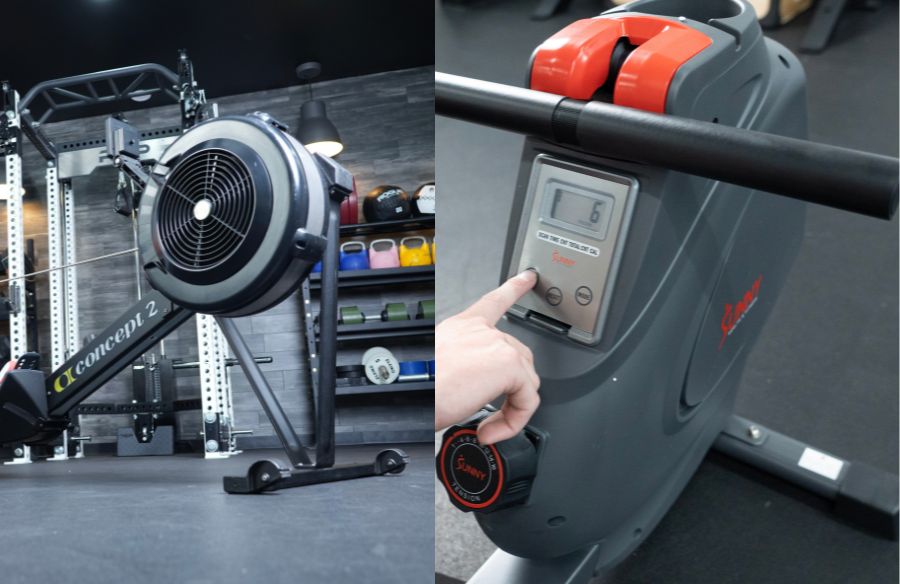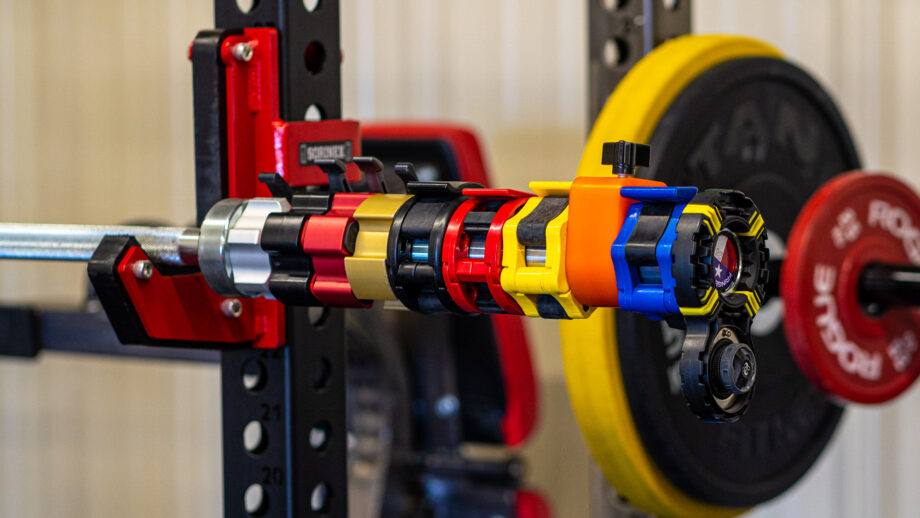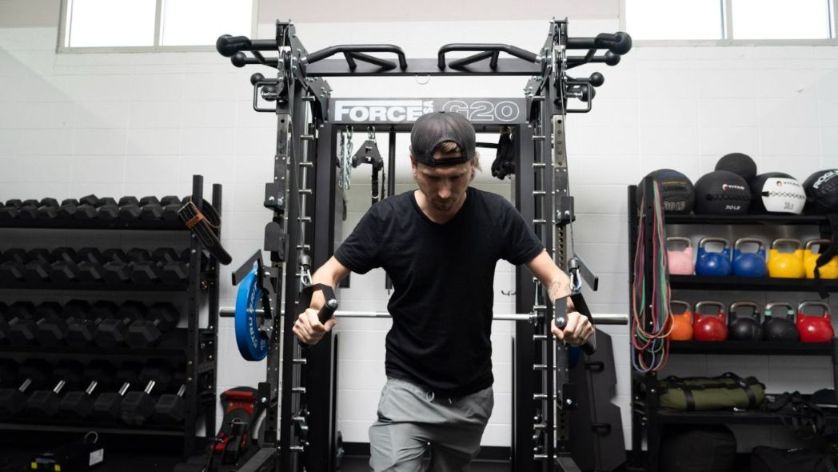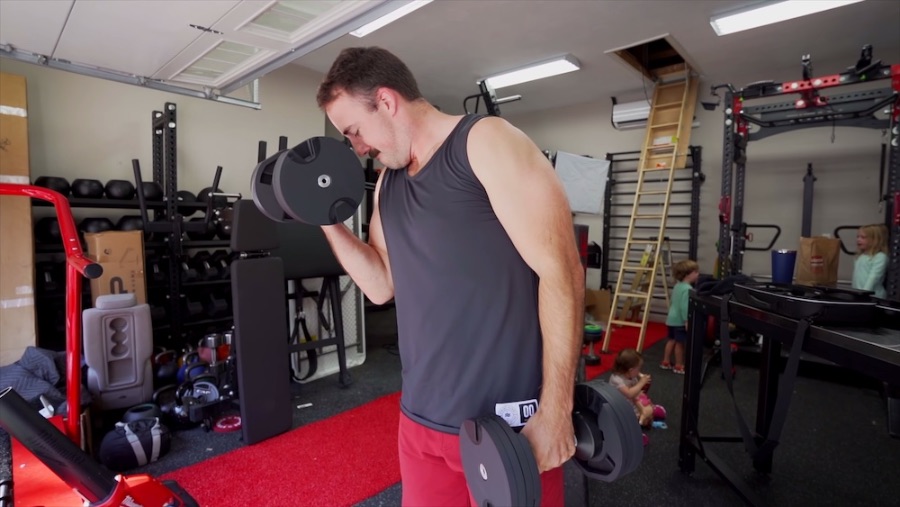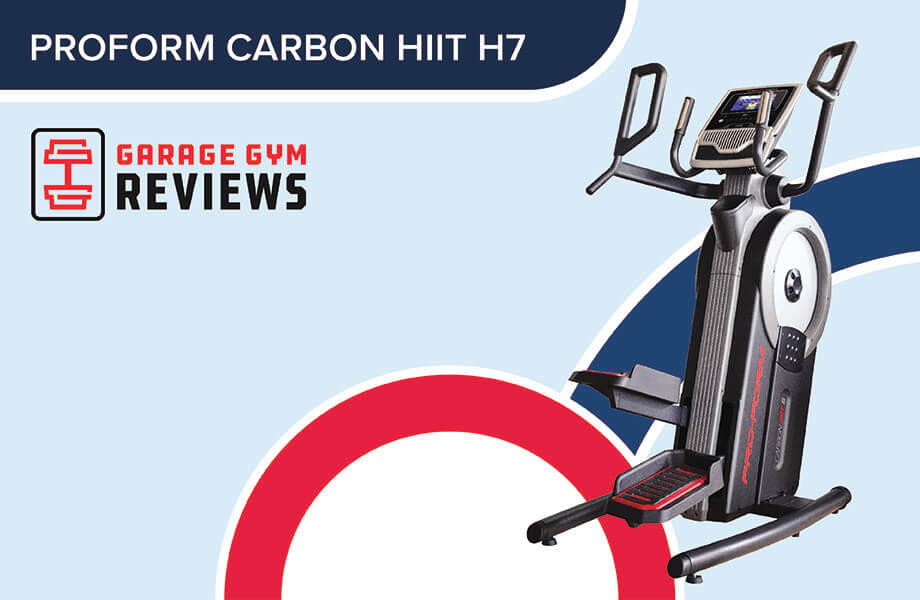Both machines give you a low-impact cardio workout, but the difference is in the resistance.
Indoor rowing is finally having its moment, and rightfully so. Rowing is a low-impact workout that works your entire body without putting too much strain on your joints. Sign us up for that!
There are many types of rowing machines, such as air, magnetic, and water, and they get their names for the way the resistance mechanism works. Water rowing machines, which use actual water to provide resistance, mimic the feel of real rowing on the water most closely, but air and magnetic rowing machines are two other popular types.
In this guide, we’ll break down some notable differences between an air vs magnetic rowing machine and highlight the similarities.
What is an Air Rower?
An air rowing machine is a fan-based rower that uses air to create resistance. As you row, air moves over an internal flywheel, which causes resistance against the fan. The faster you row, the higher the air resistance gets. Our product testers tend to think air rowers are the best type for most people, and an air rower (the Concept2 RowErg, or Concept2 Model D Rower) tops our guide to the best rowing machines.
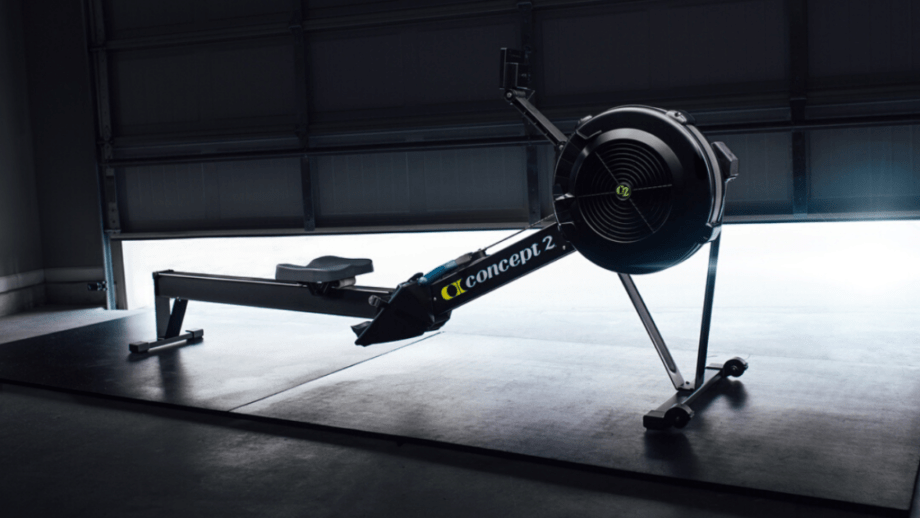
Anatomy of an Air Rowing Machine
Before jumping into the difference between both types of machines, let’s break down the anatomy of an air rower.
Flywheel
Air rowers use a fan-based flywheel. As you pull the handles, this moves the air around and over the flywheel, producing resistance. Some air rowers have dampers, but much of the resistance generated depends on your speed. If you want more resistance, pick up the pace. If you want to dial it back, slow down. Because air rowers rely on this wind speed, there are unlimited levels of resistance.
Damper
Many air resistance rowing machines have dampers that give you some manual control over how the rowing stroke feels. A damper is an adjustable lever on the side of the flywheel housing that controls how much air gets into the flywheel.
Higher damper settings open up the flywheel’s housing, allowing more air in. When the flywheel is exposed to more air, you’ll have to pull harder to spin it. The opposite is also true: A lower damper setting makes it easier to pull the handle.
Monitor
The monitors on most air rowers are fairly straightforward. While they typically aren’t tech-heavy, they do show foundational metrics like time, speed, distance, strokes per minute (SPM), and split time. Some have Bluetooth capabilities and allow you to connect a heart rate monitor, but you won’t find advanced features.
Built-In Programming
Air resistance machines generally have some built-in programming, but it depends on the model. For example, the Concept2 has five preset standard workouts and five customized workouts. Lower-end models might not have any programming, while more expensive models may have more.
What is a Magnetic Rower?
A magnetic rower operates similarly to an air rower, but the flywheel uses magnetism instead of air. In simple terms, magnets move past each other, using electric currents called eddy currents for resistance. An eddy current is a current that circulates in closed loops.
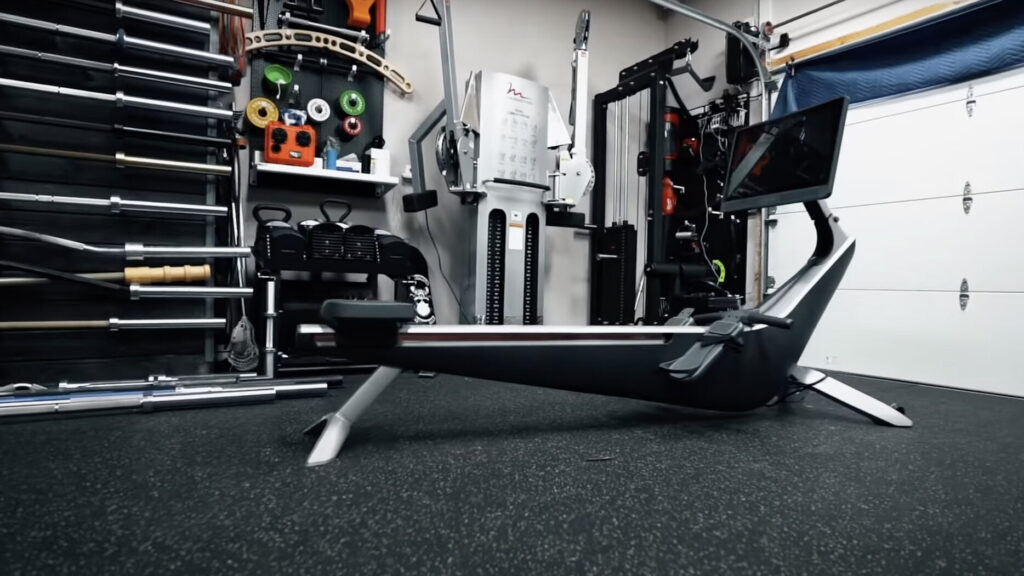
Anatomy of a Magnetic Rowing Machine
Flywheel
In magnetic rowers, the resistance comes from magnets interacting with a metal flywheel. When you adjust the resistance, it changes how close the magnet is to the flywheel. Magnetic rowing machines usually have between 10 and 16 levels of magnetic resistance settings, according to Amanda Capritto, certified personal trainer and Garage Gym Reviews writer.
Damper
Magnetic rowing machines don’t have a damper like air rowers, but they do have a dial that allows you to manually control resistance. When you turn it up, the magnets move closer to the flywheel, creating more resistance. When you turn it down, the magnets move away from the flywheel, lessening the resistance.
Monitor
There’s no standard monitor for magnetic rowing machines. Some have a small monitor that displays the basics, while others have a full HD touchscreen that allows you to follow along with instructor-led workouts and/or stream Netflix or Hulu for a fun rowing experience. The monitor depends on the level—and usually the price—of the machine.
Built-In Programming
The programming that’s installed on a magnetic rower also depends on the model. Entry-level machines may include a handful of workouts (like many Sunny Health & Fitness rowers), while smart rowers give you access to training programs and instructor-led workouts, both live and recorded (again, depending on the machine).
Some smart magnetic rowers, like the NordicTrack RW900 and Hydrow, take you through simulated rows on popular lakes and oceans. Keep in mind that access to these features requires a subscription to the brand’s fitness platform.
Air vs. Magnetic Rowing Machine: Key Similarities
Aside from the flywheel and type of resistance, the other functional components in the two types of rowers are the same, with minor differences appearing amongst individual brands and models, Amanda says.
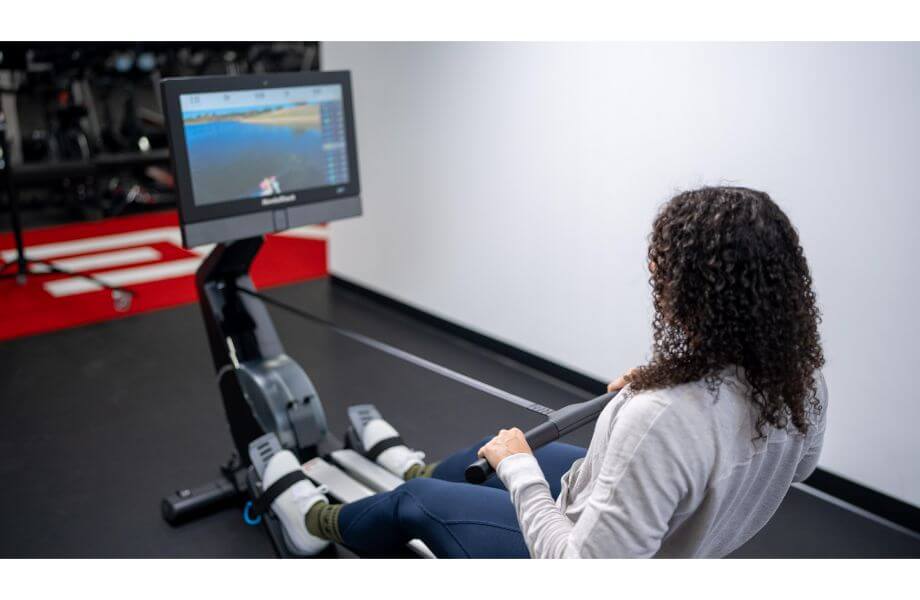
Frame
Both types of machines have similar frames and layouts. Typically, the flywheel is located at the front of the machine with a seat rail that extends out horizontally and a seat that glides along the length of it. Materials may differ slightly, but most rowing machines are built on aluminum or steel frames with plastic components. (This is untrue of water resistance rowing machines, however, which typically feature wooden construction.)
Cable System
The cable system is similar, too. Each machine has a handle that connects to the flywheel via a cable or chain. When you pull on the handle, it lengthens the cable, which spins the flywheel. On your recovery stroke, the tension of the cable is released and the resistance on the flywheel drops.
Footprint and Portability
Because they’re built the same way, there isn’t a big difference in footprint and portability for a magnetic rowing machine vs air rower. This really comes down to the specific machine and whether it’s foldable and can be stashed away when not in use. If you don’t have a dedicated storage space for your rower, make sure you’re checking if it’s foldable before you buy.
Muscles Worked
While magnetic rowing machines give you more manual control over resistance, the same muscles are worked on both machines. Since it requires pulling and pushing against resistance, rowing engages all of the major muscle groups. It works your lower body, activating your quads, glutes, and hamstrings; and it works your upper body, engaging your back (latissimus dorsi, trapezius muscles and rhomboids), core (abdominal muscles and obliques), delts, biceps, triceps, and pectoral muscles.
Read more about how to use a rowing machine to get the best workout possible.
Health Benefits
Both air and magnetic rowers have the same health rowing machine benefits; they give you a full-body workout without a lot of impact. Because rowing is fundamentally a cardiovascular exercise, it can improve your heart health, reduce blood pressure and blood lipid levels, and increase cardiac output—all things that translate to a lower risk of heart disease.
And since rowing engages your whole body, including your core, it also serves as a form of resistance training. Rowing can increase muscular strength and endurance and both lower- and upper-body strength. It’s also low-impact and suitable for all fitness levels, once the rowing technique is perfected.
Air vs. Magnetic Rowing Machine: Key Differences
The primary difference between an air rower and a magnetic rower is the flywheel, according to Amanda. “Air rowers use air-powered flywheels, which are essentially just a fan. Air enters the flywheel and creates resistance as the fan blades spin around. As the user rows faster, more air enters the flywheel, creating more resistance,” she says.
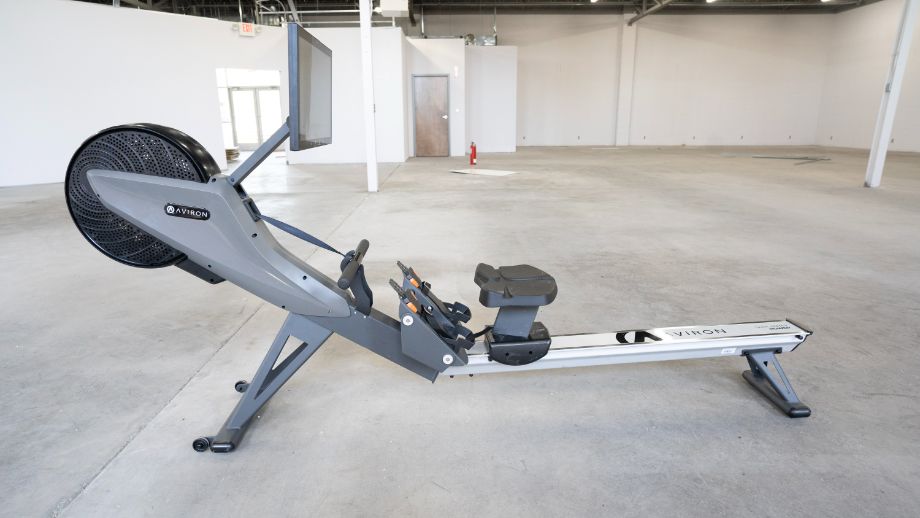
Resistance Operation
The resistance on air rowing machines is controlled by your speed, while you have manual control over the resistance on a magnetic rowing machine. With air rowers, the faster you row, the higher the resistance, akin to an air bike.
Some air rowers also have dampers, which give you control over how much air enters into the flywheel housing. The damper doesn’t change the resistance level directly, but it does have an impact on how the rowing stroke feels.
Magnetic rowing machines have defined levels of resistance ranging from just 5 or 6 up to 20, according to Amanda.
“These are a good option for people who want to maximize the strength training aspect of rowing or closely monitor progressive overload over a period of time,” she says.
Noise Level
The noise level is a notable difference, too. Wind-powered flywheels are much louder than magnetic flywheels, Amanda says, adding that many magnetic rowers today, especially the high-end, high-tech models, have near-silent flywheels.
Price
Prices span the gamut for both types of machines, according to Amanda.
“Air rowing machines top out around $1,200, while magnetic rowers range up to $2,500; but, there are plenty of budget-friendly options in both categories as well,” she says. You’ll likely be able to find either type of machine within your desired price range.
Monitors
The monitors can vary between models, but this isn’t necessarily limited to the air vs magnetic rowing machine question. Most air rowers have basic monitors, but magnetic rowers can, too—it just depends on the model. High-tech magnetic rowers come with large HD touchscreens that provide a full display. Magnetic rowers on the lower end of the price range can have monitors as basic as those on an air rower.
Built-In Programming Options
As a general rule, magnetic rowers have more built-in programming options and high-tech features, like touchscreen displays, Bluetooth connectivity, and subscription programs with instructor-led workouts
Air rowing machines usually have a basic LCD display that shows metrics like time, rowing speed, strokes per minute, and split time, although some do have extras like Bluetooth and the ability to connect a heart rate monitor and fitness apps.
Location
While both types of rowers have a similar footprint, where you’re planning to set it up will largely influence what type is best for you.
Amanda says that air rowers are great for garages or other home gym setups since they don’t need electricity to work. However, some lower-cost magnetic rowers run on batteries, so these are another option if you don’t have access to—or don’t want to use—electricity.
On the other hand, smart magnetic rowers, like Hydrow, NordicTrack RW900, and Aviron, require an outlet to power the displays, so assess your workout space before making your decision.
RELATED: Hydrow Review
Air vs. Magnetic Rowing Machine: Which Is Best for You?
At the end of the day, it’s mostly about preference. But there are some things to consider when deciding whether an air rower or magnetic rowing machine is the right choice for you.
If you’re looking for a basic machine with unlimited resistance levels, an air rower is a great fit. If you want a home rowing machine that’s more high-tech and/or the ability to control resistance levels, a magnetic rowing machine is the better choice.
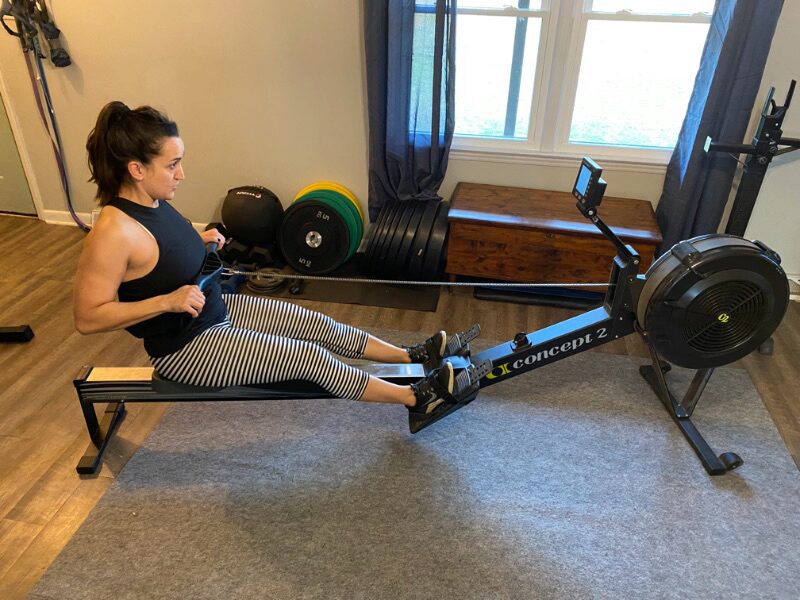
Air rowers are also a better option for serious rowers who train for on-the-water rowing machine workouts and races, as well as for CrossFitters, since it’s a general rule that air rowing machines are used for training and competing in these sports. (The Concept2 RowErg is the only rower allowed for official use in the CrossFit Open.)
| Type of resistance | Monitor | Built-in programming | Noise level | Price | Best for | |
| Air Rower | Air; user-controlled by speed | Displays basic metrics, like rowing speed, stroke rate, distance, and time | Some standard and customized workouts | Wind-powered flywheel makes it louder than magnetic | Models for every budget; usually caps out at $1,500 | Anyone looking for a basic rowing machine that more closely mimics the real-world feel of rowing on the water |
| Magnetic Rowing Machine | Magnetic; manually controlled by a dial | Depends on the machine; some are basic, while others offer a full HD touchscreen | Smart machines offer instructor-led workouts and simulated rows through lakes and oceans | Quieter than air rowers; some high-end models have near-silent flywheels | Models for every budget; usually caps out at $2,500 | Anyone looking for a higher-tech, quieter machine that allows for manual resistance; good option for those who want to maximize strength training aspect of rowing |
Air vs. Magnetic Rower FAQs
Is an air or magnetic rower better?
Both types of rowers have their perks so it really depends what you’re looking for. Air rowers offer unlimited resistance and feel more like rowing on actual water. Magnetic rowers are quieter and give you more control over the resistance level, which is ideal for those who want to maximize strength training.
RELATED: Cardio vs. Strength Training
What is the main difference between an air and magnetic rower?
The main difference between an air and magnetic rower is the flywheel. Air rowers use air-powered flywheels, while magnetic rowers use magnets that interact with a metal flywheel to create resistance.
Are magnetic rowing machines worth it?
It depends on your goals, but if you’re looking for a way to get a low-impact cardio workout, a magnetic rowing machine can be just what you need. Price-wise, there are more budget options in the magnetic rowing machine category, according to Amanda, so you’re more likely to find a machine at a lower price point, too.
Amanda says she’s quick to recommend magnetic rower to beginners (although beginners can use both types of machines), since most smart rowing machines that come with workout subscriptions with instructor-led workouts are magnetic. Note: These types of machines cost considerably more, but if you have the budget, the instruction is fantastic.
Which type of rower is the most durable?
It really depends on the brand and model, according to Amanda.
“With rowers, it’s really true that you get what you pay for, and buyers should expect to have to perform more maintenance on lower-cost machines (and replace them sooner) than more expensive machines, regardless of the flywheel type,” she says, adding that the more expensive magnetic rowing machines have more opportunity for parts failure.
This isn’t a knock on their quality or on magnetic rowers in general—there are just more parts and technical components than with simpler machines, and Amanda points out that “more stuff equals more opportunity for mishaps.”
Which type of rower is best for losing weight?
Both air and magnetic rowers are low-impact machines, and both of them can help you meet your weight loss and fitness goals.
RELATED: Rowing for Weight Loss
“There’s no proven difference in calorie burn, METs, or any other measure of energy output between the two types of rowers, so buyers should choose the type of rower they’re more likely to use on a regular basis,” says Capritto.
Related: Rowing Machine vs. Elliptical


